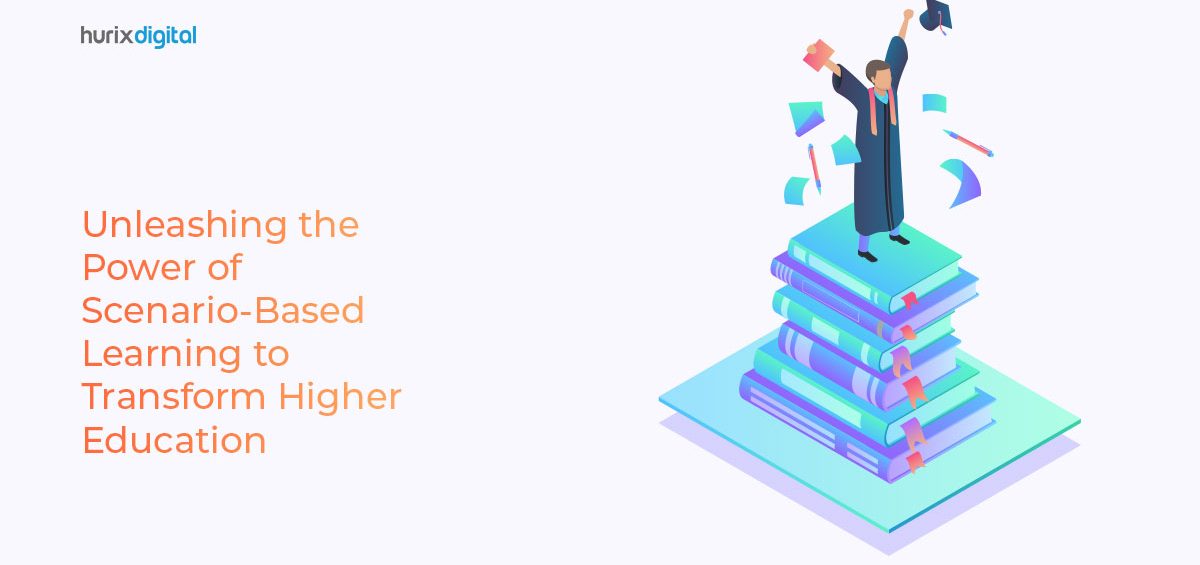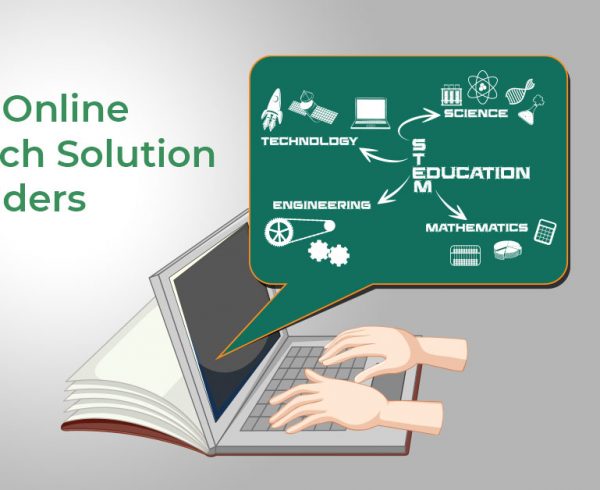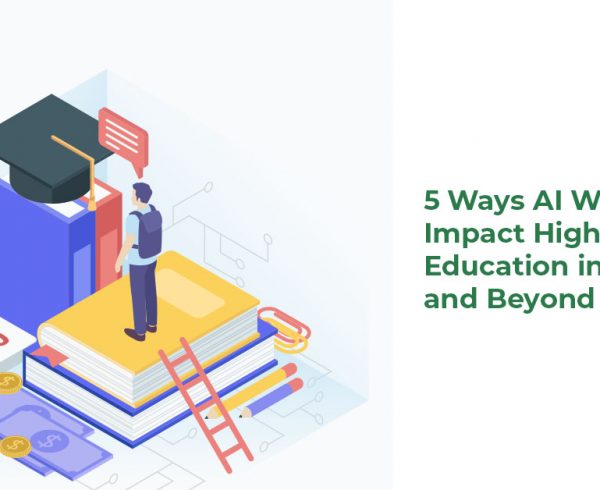As the technologies behind today’s organizations become more complex, so does the demand for an equally skilled and adept workforce. Gone are the days when organizations were ready to hire fresh graduates and invest time and money into training them.
Today, companies need employees who can get to work right from day one. The foundation for creating such a workforce starts from their education. This is where scenario-based learning comes into its own, and the benefits they offer are precisely what the 21st-century workforce demands.
In this article, we will investigate the power of scenario-based learning in transforming higher education and discover how it can unleash students’ full potential and change the landscape of higher education.
Table of Contents:
- Scenario-Based Learning – A Brief
- The Benefits of Scenario-Based Learning
- A Cheat Sheet to Create Your Scenario-Based Learning
- Summing it up
Scenario-Based Learning – A Brief
By definition – scenario-based learning is an immersive educational approach that places learners, in this case, students, in simulated situations that replicate real-world challenges. It is a method of active learning that revolves around creating scenarios that require students to make decisions to solve specific problems.
We have all been exposed to scenario-based learning in some shape or form. For example, ever been a part of a field trip, part of a fire drill, or attended a workshop on a specific skill? If so, you have experienced scenario-based learning.
Scenario-based learning is, in theory, based on an instructional approach developed in 1991 by Jean Lave and Etienne Wenger called Situation Learning. The approach places heavy emphasis on forging a link between learning by practice and a real-world situation which can give students a better insight into how knowledge is applied in the real world.
The Benefits of Scenario-Based Learning
The benefits of this dynamic learning approach go far and wide and foster the critical skills the future workforce can apply in real life. Here are the most significant benefits scenario-based learning brings to higher education.
Real-World Relevance
The most significant advantage of scenario-based learning is that it places students in realistic simulated situations that simulate firsthand the challenges and complexities they might face if this were a real-world scenario. The benefits of this are two-fold.
First, these scenarios foster critical thinking and problem-solving, which are crucial to navigating real-world work scenarios.
Second, these realistic scenarios prepare them for the complex problems they may have to deal with in the future, helps them better identify possible issues, and develop practical solutions to mitigate them.
Active Engagement
We now live in a world flooded with information. We have smart devices near us wherever we go, and recent studies have found that this information overload is leading to a steady drop in attention spans.
Actively engaging students to make decisions and solve problems has drastically improved knowledge retention in both k-12 or higher education and in the workplace.
Active engagement also offers a secondary benefit, as most scenario-based learning involves multiple students; engaging them in this manner also helps develop their communication and interpersonal skills, which in the real world is vital to thriving in a collaborative environment.
Safe Environment For Experimentation
Take the field of medical science or a military scenario, consequences don’t get any real here, and there are no redoes. Consider professions such as woodworking, metalworking, or working around heavy machinery; sustaining life-altering injuries is a real possibility here.
This is where scenario-based learning can provide a safe environment for students to learn critical skills without fear of negative consequences.
The benefits; encouragement to take risks, try new things, and learn from their mistakes.
Collaboration And Teamwork
Organizations look for team players, and this is something these learning programs factor in. While we touched upon the added benefit of improved interpersonal skills, scenario-based learning also fosters team building and collaborative skills among students.
Collobaraove and team building lay the foundation among students to build leadership skills which are another key skill recruiters look for and are essential for success in any workplace.
Real-Time Feedback
“It takes many good deeds to build a good reputation, and only one bad one to lose it.” – Benjamin Franklin.
Mistakes in the real world have real conquests, but how will students who have never stepped foot into a workplace learn this? This is where scenario-based learning varies from traditional learning approaches, wherein students get to see the consequences of their decisions and actions in real-time.
Real-time feedback in simulated scenarios allows them to rethink their approach to problems as often as they want until they can find a viable solution. A practice that can help them develop their problem-solving skills by embracing creativity and innovation.
Each of these critical life skills learned through scenario-based learning can benefit students in real work when they are a part of the future workforce.
A Cheat Sheet to Create Your Scenario-Based Learning
Scenario-based learning is not rocket science. If you are looking for a starting point for incorporating it into your curriculum, these pointers will help you get the ball rolling.
- Clearly define the learning objectives. This will help you design scenarios aligned with the desired outcomes.
- Develop them to reflect on real-world situations with as much authenticity as possible.
- Make them interactive. It will improve engagement and promote active learning.
- Provide immediate and constructive feedback.
- Design scenarios with multiple paths and outcomes to promote critical and analytical thinking.
- Design them to be digitally inclusive. Every student deserves an equal shot at learning.
Also Read: 10 Reasons to Invest in Custom Scenario-based eLearning
Summing it up
Scenario-based learning goes a long way in helping students transition from theoretical learning and real-world life experiences. Apart from fostering critical skills students will need to survive in an ever-evolving dynamic workplace, it also promotes a growth mindset by allowing them to fail and learn from their shortcomings.
To sum it up, when used correctly, scenario-based learning is a powerful tool for preparing the next generation of leaders, innovators, and problem-solvers the world will need in the coming days.
Are you looking to add scenario-based learning to your curriculum or for a cutting-edge digital higher education experience for your students? Look no further than Hurix. Our innovative platform offers various digital services to help students thrive in today’s rapidly changing educational landscape.
With a focus on real-world relevance, interactivity, and collaboration, Hurix is the perfect choice for educators looking to take their education up a notch. So why wait? Get in touch with us today.











